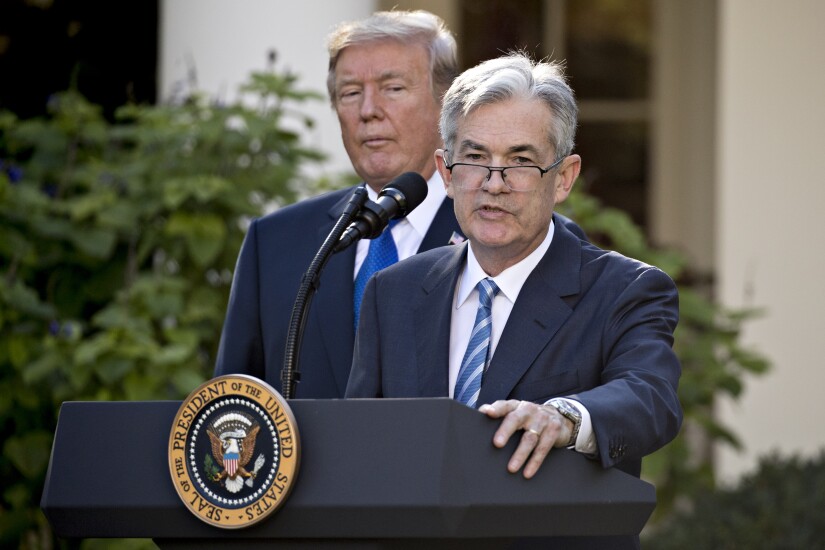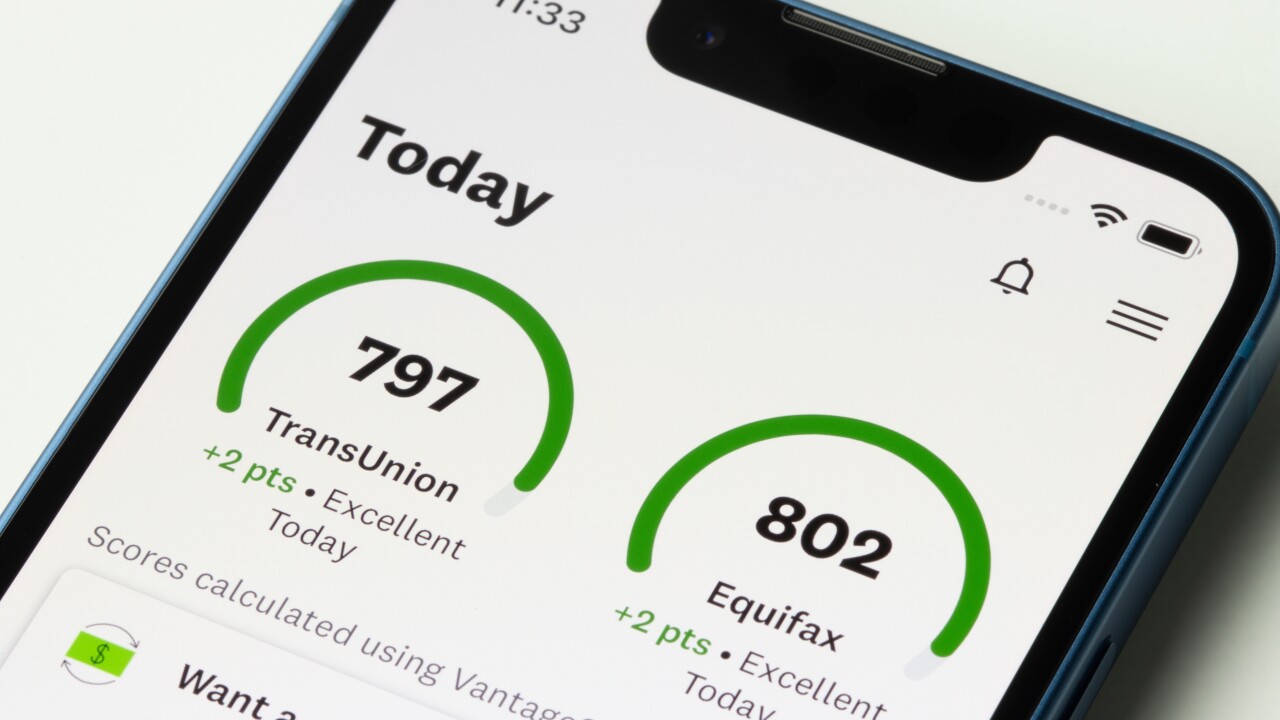
The Fed is not the only bank regulator, but under the Obama administration it played a pivotal role in conceptualizing and executing the new macroprudential rules and processes that have arisen since the financial crisis. Many aspects of those rules and regulations have been the source of considerable opposition from Congressional Republicans for years.
So now that a Republican president has made his appointment to lead the Fed, what do we know about the direction he will take the institution and what regulatory changes he will support?
It’s important to note that, while Powell has been nominated as Fed chair, Randal Quarles — Trump’s first appointment to the central bank — is already serving as the vice chair of supervision, whose job it is to “develop policy recommendations for the Board” and who “shall oversee the supervision and regulation” of firms subject to Fed oversight.
There
But Powell has opinions of his own on regulatory matters all the same, and has
Following is a summary of those positions:

Regulatory relief for community banks
In his testimony before the Senate Banking Committee in June, Powell cited four areas of post-crisis reform that should not be discarded: capital, liquidity, stress testing and resolution. But of the areas that should be revised, the first on his list was tailoring regulation to lessen the burden on community banks.
“We're working to build on the relief that we have provided in the areas of call reports and exam cycles by developing a proposal to simplify the generally applicable capital framework that applies to community banking organizations,” Powell said.

Housing finance reform
“I hear people from all sides saying they find the current status quo unacceptable and seeing constructive movements,” Powell said in a July speech. “If we don’t get on with this, we will find ourselves, I believe, with time, with a lot of exposure to the taxpayer and financial stability issues.”
Powell did offer some principles for a reform plan, including that they should not be "too big to fail," and calling for steps to ensure that they could be resolved safely. This can be done in a number of ways, he said, including by encouraging private capital to absorb losses, but he added that there should also be an explicit — rather than implicit — government guarantee of the securities that GSEs bundle.
“If Congress chooses to go in this direction, any such guarantee should be explicit and transparent, and should apply to securities, not to institutions,” Powell said. “Reform should not leave us with any institutions that are so important as to be candidates for too big to fail.”
Related content:

Capital requirements
“My view is that U.S. capital standards are about right right now,” Powell said in October at an event held by George Washington University Law School and Reuters. “Risk-based capital is about where it needs to be — I don’t see it as clearly too high or too low.”
Related content:

Stress tests
Powell has said relatively little on what he wants to see out of a retooled stress testing program, but he has made it clear that he thinks the program’s modeling can be more transparent. In an interview with CNBC in June, he said the Fed would start disclosing some details of how certain portfolios perform under stress conditions, giving banks a better idea of what the Fed’s models assume about certain assets’ performance.
“These are very successful, very important post-crisis innovations, and we want to continue and strengthen that,” Powell said. “We are working now to … provide more granular information about our expectations for loss rates on particular portfolios.”
Related content:

Bank boards' responsibilities
"We do not intend that these reforms will lower the bar for boards or lighten the loads of directors,” Powell said. “The intent is to enable directors to spend less board time on routine matters and more on core board responsibilities: overseeing management as they devise a clear and coherent direction for the firm, holding management accountable for the execution of that strategy, and ensuring the independence and stature of the risk management and internal audit functions.”
Related content:

FDIC's Orderly Liquidation Authority
But when he helped to design a simulated bank resolution using the Federal Deposit Insurance Corp.’s Orderly Liquidation Authority just before his nomination to the Fed, he came to see how the single-point-of-entry methodology could actually make such a large institution resolvable without cratering the broader economy.
“I believed that an attempt to resolve one of these firms — a firm with multiple business lines carried out through countless legal entities, across many jurisdictions and different legal systems — could easily spin out of control,” Powell said. “What changed my mind was the FDIC's innovative ‘single-point-of-entry’ approach, which was just coming into focus in 2011. This approach is a classic simplifier, making theoretically possible something that seemed impossibly complex.”
The FDIC, under the leadership of Chairman Martin Gruenberg, has vigorously defended its OLA authority and the regulators' use of banks resolution plans, or living wills. Though the Fed plays only a secondary role with respect to OLA, Powell's perch atop the Fed makes it more likely that regulators would use such powers if the situation warranted.

Faster payments
One of the challenges of reforming and modernizing the U.S. payments system is that it affects almost all of a nation’s commerce but is not one institution’s responsibility. Instead, it involves merchants, credit card companies, banks, the Fed, the Treasury and other stakeholders. Under Powell’s leadership, the Fed has begun to facilitate the establishment of an industry governance framework for payments, and will begin assessing security vulnerabilities in the U.S. payments system.
“We plan to actively engage with the industry and other stakeholders to further understand gaps and requirements for real-time retail payments settlement and assess alternative models that will support needs over the long term,” Powell said. “We also plan to explore and assess the need, if any, for other related Federal Reserve services or capabilities.”

Blockchain
He laid out several reasons for this. One was that the open-source nature of distributed ledger technology is not compatible with the security and confidence requirements of payment systems.
“Some argue that movement away from open systems undermines the potential efficiency and the spirit of DLT,” Powell said. “At least for now, in payment, clearing, and settlement, safety and confidence must also weigh in the balance.”
Among other concerns he cited were the variability and incompatibility between blockchains, concerns about governance and the “reliability, scalability, and security” of the technology in its present state. He also said the legal underpinnings of the technology, especially as it relates to international commerce, are unresolved. Ultimately, firms will be reluctant to embrace the technology on a wide scale, he said, until these weaknesses are dealt with.
“Promoters of DLT offer a vision of streamlined processes that lead to faster processing, reduced reconciliation, and lower long-run operating costs,” Powell said. “But upgrades are often costly, lengthy, and risky, particularly if the technology is still being proven, as is the case for DLT.”

Volcker Rule
Powell said in his June testimony before the Senate Banking Committee that the rule “probably could have been limited to a handful of firms” but instead applies to the entire banking industry, which he said accounts for much of the compliance headache for banks and regulators.
“We would support significant tailoring of the application in Volcker so that really it falls on the banks that have big trading books, and it falls much more lightly as you go down” in asset size, Powell said. “It's very important that the intensity of regulation be tailored appropriately for the risk of the institution present.”

Interest rates
Powell’s views about monetary policy seem to be more pragmatic than doctrinaire, with a tendency to err on the side of caution. In a June interview on CNBC he said that he was broadly on board with the Fed’s three-rate-hike program for 2017 and would support beginning to draw down the Fed’s balance sheet.
With respect to the ultimate size of the Fed’s $4.5 trillion balance sheet, Powell reflected a view that was generally in line with Yellen’s, envisioning a smaller but still historically large balance sheet even after monetary policy normalization.
“My own thinking is, it really depends on a whole bunch of factors which haven’t been decided yet,” he said. “It’s hard for me to see the balance sheet getting lower than $2.5 trillion to $3 trillion. That assumes that we normalize the balance sheet over the course of the next five years and go back to a fairly small number of reserves.”





